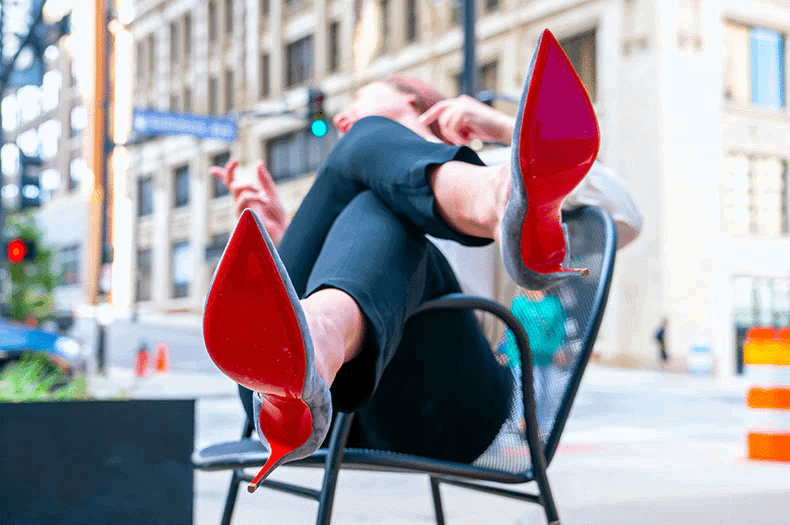Every business has its own identity. Just like each person has their own personality, a brand identity is a business identity that sets you apart from other businesses. Your brand identity encompasses various things, such as your logo, color palette, typography, and photography. It’s this collection of elements that are developed to portray your business in the way you want (and the way they want) to your customers. It’s what makes your business instantly recognizable. A good brand identity lets you build customer loyalty and determines how your customers will envision your brand and benefit from it.
Elements of brand identity
Logo
Your logo design is one of the main design elements of your brand identity. Logos symbolize your brand, allowing your customers to easily identify whether a product or service is from your business. When creating or redesigning a logo, you should always aim to create one that communicates who you are and the values you set as a brand. It should also be visually appealing to ensure that it has a long-lasting impression on your audience.
Your company logo should appear on everything from letterhead and business cards to your website and advertising. This is why a logo is the basic unit of a larger brand identity that includes company fonts, colors, and document-design guidelines.
There are four great reasons why good logo design is important to your business:
- Your logo should make a strong first impression
- A great logo helps attract new customers
- Your logo helps your company stand out from competitors
- A strong logo can keep customers coming back for more
Color palette
Colors are proven to have a psychological effect on people and strategically using colors to identify your business can have a major impact on how your consumers visualize your brand. A good combination of color and design can change your audience’s impression of your brand. Different colors and color combinations are known to mean different things:
Red – This is the color of passion and excitement, and it’s commonly used by many successful power brands such as Coca-Cola. This is the perfect color choice if your brand is exciting, youthful, and you want to create a big impact.
Green – Green is versatile and can be used for almost any brand. When asked to describe green, people generally relate it to harmony, freshness, energy, and growth – just like LimeLight!
Blue – This color has an almost universal appeal. Blue is generally thought to be a stable and trustworthy color. If your brand engages with a wide demographic and you need to build audience trust, blue might be the ideal color choice.
Orange – This is another color that shows high energy as well as friendliness and playfulness. Another great benefit of using this color is that it serves as an alternative to red, which can allow you to stand out more.
Yellow – This color is generally portrayed as sunshine, which is all about happiness. If your brand is fun, then this might be the right color for you because it gives a feel for freedom and joy.
Purple – Often used by luxurious brands because it symbolizes royalty and shows that a brand is premium or high-end.
Brown – There are not many brands that opt to use brown for their branding. However, this means you can use that to your advantage if you want to stand out. Brown is linked to reliability and dependability, so it’s worth considering if these are amongst your core brand values.
Black – This is another color that is almost common because it gives your brand the identity that it is sophisticated and modern. It’s classic and can mean many things, such as power, strength, elegance and authority.
Make sure that whichever main color and color palette you choose it works across all channels, both offline and online. Colors can have a major influence, especially on your website visitors, and it’s important to make sure the user experience is, well…palatable. (Sorry.)
Brand typography
Typography is generally the font you will be using for your designs – also known as “the visual art of creating written words.” The arrangement of typical typography involves selective typefaces, point sizes, line lengths, and line spacing. The adjustments of these elements are what make different fonts. These are the major types of typography for brand designs:
Serif font – This type of font usually has an “anchor” or what looks like little feet after each letter. This is classical typography which includes fonts like much-derided Times New Roman and Garamond. This type of font helps to create a trustworthy or traditional appearance.
Sans Serif font – The opposite of serif font. Where serif fonts have little feet, this font is without them. They have letters that have smooth edges, and some examples of this type of font are Helvetica or Franklin Gothic. Sans serif fonts allow your brand to look sleek and give a modern feel to your typography.
Script typography – Scripts, in general, are cursive handwriting fonts. Fonts like Allura or Pacifico can be used to make your brand look luxurious and stylish.
Display fonts – these fonts are different from ordinary fonts and are typically used in headings, or where you need text to stand out. They may have unusual shapes or include outlines, shadowing, and more. Display fonts make a bold statement.
Brand photography
Brand photography is a set of professional images that visually represent your business. These images should match color palette as far as possible so that there’s a consistent feel across all of your marketing assets.
Your set of brand photographs can include images of your teams, products, processes, facilities, events, etc. Photography is one of the greatest assets you have to really differentiate your brand from your competitors, as everything you create is unique.
Good brand photography also provides many other benefits, including:
- Making your brand relatable
- Giving your brand personality
- Making a great first impression
- And crucially, increasing engagement and conversion rates
Make sure you update your photography fairly frequently. It’s easy to overuse your best images and they can quickly become outdated.
Your logo, color palette, typography, and photography combine to create your visual brand identity, and having a brand identity that can help you stand out against your competitors can only be effective for your brand development.
Make sure your business stands out – contact us to chat about brand identity for your business.


